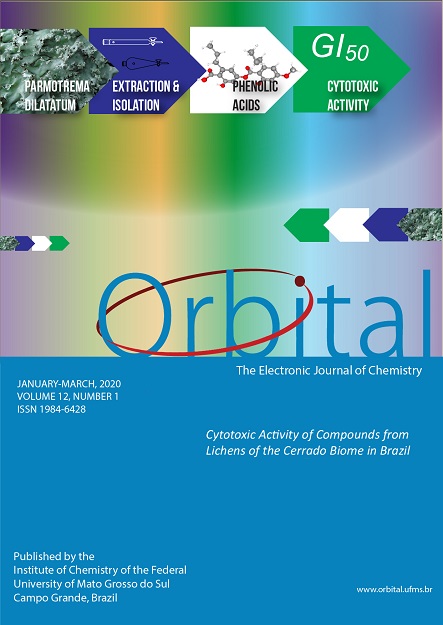Kinetic Study of the Reaction of Benzofuroxans with 2-Acetylthiophene: Effect of the Substituents on the Reaction Rate Using Hammett Equation
- 2-acetylthiophene,
- benzofuroxan,
- Hammett equation,
- substituent effect
Copyright (c) 2020 Orbital: The Electronic Journal of Chemistry

This work is licensed under a Creative Commons Attribution-NonCommercial-NoDerivatives 4.0 International License.
Abstract
The present work reports kinetic study of the reaction of benzofuroxan and its derivatives with 2-acetylthiophene. Hammett equation was used to determine the rate of the reaction and substituent effect. Specifically, chloro, nitro and methyl substituted benzofuroxans react with α-carbonyl compounds to form a fungicidal product quinoxalines-di-N-oxide (phenazine N5, N10-dioxides). The effect of the benzofuroxan substituents on the reactivity was performed and monitored by a UV/Visible spectrophotometer. The rate constants of the benzofuroxan, 5-chlorobenzofuroxan, 4-nitrobenzofuroxan, 5-methylbenzofuroxan and 4,6-dinitrobenzofuroxan reactions were found to be 3.32x10-3, 4.24x10-3, 3.48x10-3, 8.03x10-3 and 9.41x10-3 min-1 respectively. Moreover, Log k/k0 against the substituent constant σ gave a linear relationship, which indicates positive effect of electron withdrawing substituent on the reaction. Therefore, the substituents have substantial effect on the reaction of benzofuroxans with 2-acetylthiophene.

